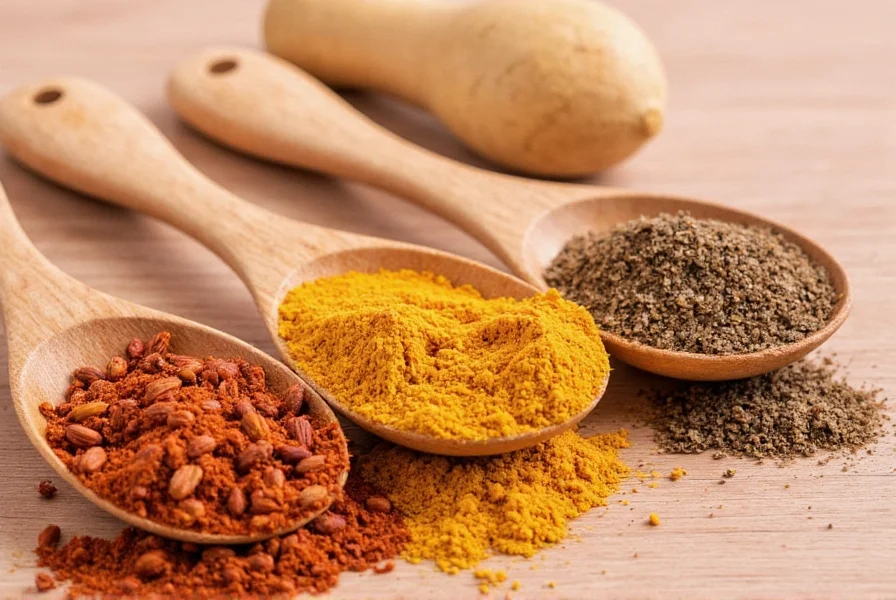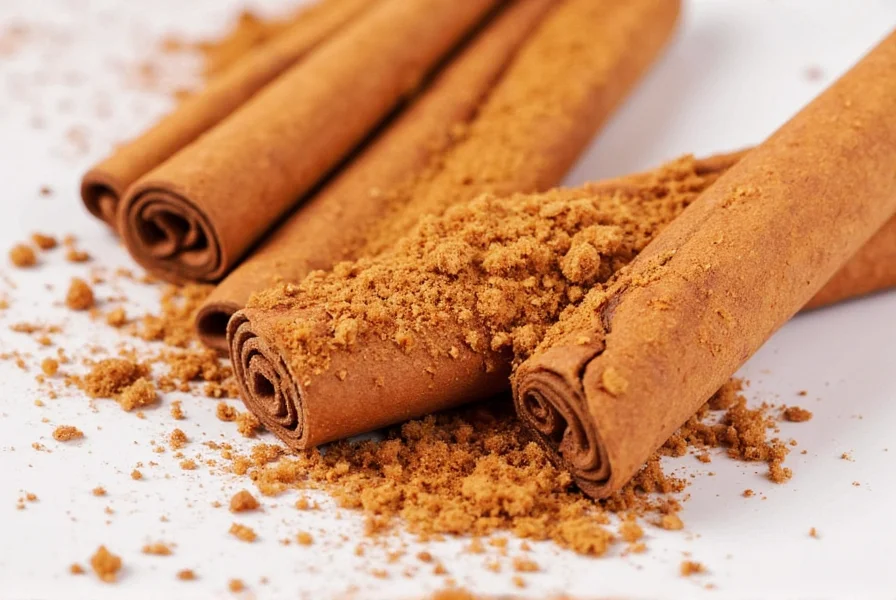Cinnamon comes from the inner bark of Cinnamomum trees, primarily grown in Sri Lanka (for Ceylon cinnamon) and China, Indonesia, and Vietnam (for Cassia cinnamon). It has been used for thousands of years, from ancient Egyptian embalming to modern-day baking. This guide explains everything you need to know about cinnamon's origin, types, harvesting process, and global culinary applications, backed by scientific research from the USDA and peer-reviewed journals.

Table of Contents
- A Brief History of Cinnamon
- Types of Cinnamon: Ceylon vs Cassia
- How Is Cinnamon Harvested?
- Common Uses for Cinnamon Around the World
- Buying Guide: How to Choose the Best Cinnamon
- Storage Tips: Keep Your Cinnamon Fresh Longer
- Fun Facts You Probably Didn’t Know About Cinnamon
- Frequently Asked Questions About Cinnamon's Origin
- Final Thoughts: Spice Up Your Life with Real Cinnamon
A Brief History of Cinnamon
Long before cinnamon was sprinkled on lattes and fall pies, it was considered a rare treasure. Ancient Egyptians used it in embalming, while Roman elites burned it at funerals as a symbol of status. The Greeks and Romans believed it had medicinal properties — and they were right, in many ways.
In the Middle Ages, cinnamon became a must-have luxury among European aristocrats. It wasn’t until global trade routes expanded that this once-precious spice became more accessible. Today, it’s one of the most widely used spices worldwide, but its origins are still steeped in culture and history.
Types of Cinnamon: Ceylon vs Cassia
Here’s a cinnamon fact that might surprise you: not all cinnamon is created equal. In fact, there are two main types sold globally: Ceylon cinnamon and Cassia cinnamon. Here’s a quick comparison:
| Type | Also Known As | Origin | Flavor Profile | Health Benefits |
|---|---|---|---|---|
| Ceylon | "True Cinnamon" | Sri Lanka | Mild, sweet, and complex | Lower in coumarin, safer for regular use |
| Cassia | Chinese Cinnamon | China, Indonesia, Vietnam | Bold, spicy, slightly bitter | Higher in coumarin, may be harmful in large amounts |
If you’ve ever bought ground cinnamon in the U.S., chances are it’s Cassia. It’s cheaper and more widely available than Ceylon. But if you want a subtler flavor and fewer health concerns, Ceylon is worth seeking out.
How Is Cinnamon Harvested?
So, now that you know the different kinds, let’s talk about where does cinnamon come from — literally. Cinnamon comes from the inner bark of trees from the genus Cinnamomum. These small evergreen trees grow in tropical climates and can be harvested after about 2–3 years.
- The outer bark is stripped away.
- The inner bark is carefully removed in layers.
- It’s then dried, which causes it to curl into quills (those classic cinnamon sticks).
- Once fully dry, the quills are cut into appropriate lengths and sorted by quality.
- They can either be sold as whole sticks or ground into powder.
This traditional method is still used today, especially in Sri Lanka for Ceylon cinnamon. In contrast, Cassia harvesting tends to involve thicker bark and a coarser final product.
Common Uses for Cinnamon Around the World
Cinnamon’s versatility is part of what makes it so popular. Here’s how different cultures put this spice to work:
- Middle East: Used in savory dishes like lamb stews and rice pilafs.
- India: A key ingredient in masala chai and garam masala blends.
- Europe: Found in everything from mulled wine to apple strudel.
- Mexico: Often added to hot chocolate and churros.
- United States: Star of cinnamon rolls, pumpkin spice lattes, and countless baked goods.
But it doesn’t stop there! Cinnamon also shows up in aromatherapy oils, skincare products, and even candles — making it a multi-sensory favorite across the globe.

Buying Guide: How to Choose the Best Cinnamon
Ready to upgrade your spice rack? Here’s how to pick the best cinnamon for your needs:
1. Whole Sticks vs Ground Powder
- Whole sticks offer longer shelf life and are ideal for infusing flavors into liquids (like soups, stews, or syrups).
- Ground cinnamon is convenient and perfect for baking or adding to drinks.
2. Check the Label for Origin
- Look for "Ceylon cinnamon" if you prefer a milder taste and lower coumarin content.
- Labels saying just "cinnamon" usually indicate Cassia.
3. Consider Organic and Fair Trade Options
- These ensure sustainable farming practices and fair wages for growers.
4. Recommended Products
| Product Name | Features | Advantages | Best For | Occasion |
|---|---|---|---|---|
| Simply Organic Ceylon Cinnamon Sticks | Organic, fair trade certified | Mild, aromatic flavor, long shelf life | Fine cooking, herbal teas | Gifts, gourmet recipes |
| McCormick Ground Cinnamon | Popular brand, affordable | Great for everyday baking | Home bakers, coffee lovers | Daily use, holiday treats |
| Frontier Co-op Ceylon Cinnamon Powder | Pure, organic, non-GMO | Perfect for wellness-focused consumers | Smoothies, oatmeal, DIY spice blends | Morning routines, healthy snacks |
Storage Tips: Keep Your Cinnamon Fresh Longer
To preserve flavor and potency, store your cinnamon properly:
- Whole sticks can last up to 4 years when stored in an airtight container.
- Ground cinnamon retains freshness for 1–2 years.
- Keep it away from heat, light, and moisture — a cool pantry is perfect.
- Grind your own sticks using a microplane or spice grinder for maximum aroma.
Fun Facts You Probably Didn’t Know About Cinnamon
Let's wrap up with some fascinating tidbits to impress your friends at your next spice-themed dinner party:
- Cinnamon has natural antimicrobial properties — it was once used to preserve food.
- In ancient Rome, a pound of cinnamon was worth more than five ounces of gold.
- According to a 2013 study published in the Journal of Diabetes Science and Technology, cinnamon can help regulate blood sugar levels — making it popular among diabetics.
- Chewing cinnamon sticks can help freshen breath naturally.
- Research from the University of Copenhagen suggests that cinnamon may improve cognitive function and memory retention.
Frequently Asked Questions About Cinnamon's Origin
Where does cinnamon actually come from?
Cinnamon comes from the inner bark of trees belonging to the Cinnamomum genus. When the bark is harvested and dried, it curls into the familiar cinnamon sticks (quills) we use as a spice.
What specific tree produces cinnamon?
True cinnamon (Ceylon cinnamon) comes from the Cinnamomum verum tree, native to Sri Lanka. Most cinnamon sold in the United States is actually Cassia, which comes from the Cinnamomum cassia tree, primarily grown in China, Indonesia, and Vietnam.
Which countries are the main producers of cinnamon?
Sri Lanka is the largest producer of Ceylon cinnamon (about 80-90% of global supply). China, Indonesia, and Vietnam are the main producers of Cassia cinnamon. Smaller amounts are also grown in Madagascar, Brazil, and the Caribbean.
How is cinnamon harvested from the trees?
Cinnamon is harvested by cutting 2-3 year old cinnamon tree shoots close to the ground. The outer bark is stripped away, and the inner bark is carefully removed in layers. This inner bark is then dried, causing it to curl into quills (cinnamon sticks).
Why is there a difference between Ceylon and Cassia cinnamon?
Ceylon cinnamon comes from a different species of tree (Cinnamomum verum) than Cassia cinnamon (Cinnamomum cassia). Ceylon cinnamon has a thinner, more delicate bark that forms multiple tight layers when dried, while Cassia has a thicker, harder bark that forms a single scroll. This results in different flavors, colors, and chemical compositions.
Is cinnamon really just tree bark?
Yes, cinnamon is indeed processed tree bark. Specifically, it's the inner bark (phloem layer) of cinnamon trees. When this inner bark is removed and dried, it curls into the characteristic cinnamon sticks we recognize.
Final Thoughts: Spice Up Your Life with Real Cinnamon
Now that you know where cinnamon comes from, the differences between types, and how to choose the best one for your kitchen, it's time to take your spice game to the next level. Whether you're stirring up a cozy latte or experimenting with global cuisine, a little cinnamon can go a long way.
Don't settle for bland or overprocessed spices — understand what you're buying and enjoy the real deal. After all, cinnamon isn't just a spice — it's a piece of history, a burst of flavor, and a touch of magic in every bite.










 浙公网安备
33010002000092号
浙公网安备
33010002000092号 浙B2-20120091-4
浙B2-20120091-4